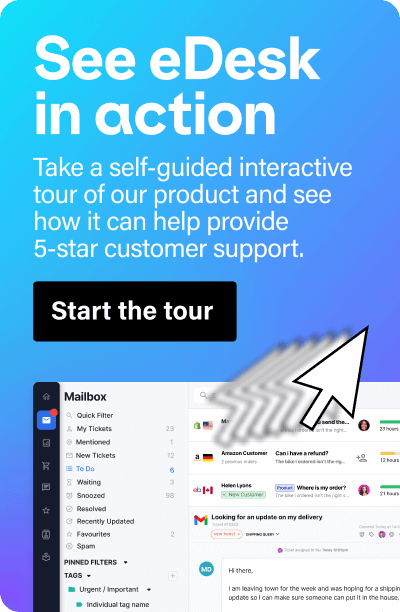I remember my first position in a sales team.
As the team leader walked me around the office there was one thing that stood out more than the rest.
Directly in the center of the sales team, mounted on a pillar, was a small bell. Above the bell a sign read, quite simply, “ring the bell!”.
Puzzled, I stopped the tour and asked my new boss what it was for.
He explained that new business was a huge deal. It was the lifeblood of the company and that every new deal, no matter how small, needed to be celebrated.
As he was explaining this one of the sales reps stood up from her desk, walked over to the bell, and gave it an almighty ring.
The ring was greeted with a cheer from the room before everything settled back into the professional atmosphere it had been before.
It struck me as strange at the time. However, as the weeks went by I got used to it. As I started ringing it myself I fell into that mindset of the salesman that new business is the key to growth.
And yet, as I’ve pivoted in my career I realize that focusing solely on new business is a foolish way to grow a brand in any industry.
Why New Business is NOT the Lifeblood of Successful Growth
Putting all your attention on signing new business isn’t a terrible way to grow. It’s based on cold, hard logic after all.
The more sales you make, the more money you get, right?
But what people fail to examine is the cost, effort, and wastage of that new business.
It’s far more expensive to sign new business than it is to retain your current customers.
Not only is it easier to retain customers than find new ones, but those already invested in your brand are easier to sell to.
So it costs less to keep your current customers around AND they’ll spend more money with you. Those two reasons alone should be enough to make you turn your focus from acquisition to retention.
However, one of the other problems that comes with focusing only on new business (and that’s rarely talked about) is user churn.
In monthly subscription services, churn is when a user ends their contract and stops paying you. For e-commerce and product sales, churn is most similar to users never purchasing from you again.
Top Reasons Customers Churn and How to Solve Them
Customers stop purchasing from businesses for all sorts of reasons.
Some, like solving the customer’s problem, are entirely out of your hands and often a sign of your product’s value.
However, for every positive a reason a customer stops purchasing from you, there’s multiple reasons that are entirely within your control.
Here’s a breakdown from the guys at SuperOffice on the reasons for customer churn.
Out of those top 7 reasons, 3 are within the power of your brand to change immediately, and here’s how.
Customer Service
Great customer service builds trust, bolsters relationships, and makes sales.
Problem is, the majority of online brands don’t really do all they could to offer an incredible customer service experience.
One of the key problems is in how many brands still rely on email to handle simple objections. Users could ask a question that’s as simple as “does this come in blue?”, and have to wait 24 hours for a response.
I//econsultancy.com/consumers-prefer-live-chat-for-customer-service-stats/f you’ve ever been kept waiting in a store for the assistant to help you know how frustrating this can be.
The easiest way to improve your customer service is to offer a real person to speak to and real-time conversations through live chat. It’s exactly what your customers are looking for.
Live chat is growing from strength to strength every single year because it simplifies the customer service process.
It allows people to quickly discover the answers to the questions that are stopping them from purchasing and builds a better image of your brand increasing the likelihood of repeat purchases.
Price
Product pricing isn’t often decided with little thought.
Whatever it is you’re selling you’ve likely considered all of your overheads, production fees, and of course added something on top as a profit maker.
The actual price of the product is something that usually cannot be changed. However, you can remove friction causing elements that bump up the price and cause people to reevaluate their purchase.
For example, one of the key reasons for cart abandonment in e-commerce is an unexpected cost at the latter stages of the purchase journey.
There’s a couple of ways to combat this.
The first is to simply waive these extra fees. Remove them from the products and you should see more people willing to purchase.
The second is to make the extra costs extremely apparent from the get-go. Don’t surprise your users with extra costs after you’ve got them excited about the lower fee. It’s underhanded and frustrating.
Functionality
Functionality is a difficult aspect to combat. Your product or service does what it does, right?
If someone wants to do something it can’t handle, then you can’t change it just for them.
The goal here is to better educate people, both pre and post purchase.
By making sure users know exactly what a product can be sued for and highlighting it’s best use cases you should reduce the number of people with unrealistic expectations from purchasing.
It’s not easy to do, but you should approach this from a couple of angles.
- Ensure the description of the product/service is as clear as possible on usage and limitations
- Show user’s the product or service in action through images or videos and case studies
- Be there to answer questions for users. But be honest and say if this isn’t right for their needs or you’ll end up incurring greater costs through returns and refund processing.
The second step to reducing churn through functionality issues is training people how to use your product or service.
Most brands operate on a very simple follow up process.
They sell the product, then after 2-3 days ask the user for a review.
That’s it.
It’s a process that could lead to you shooting yourself in the foot. If after those first few days the user has had no success with your product, then the review they leave will be a negative one.
Your user’s don’t need much. They just want to be kept in the loop and educated on how to get the most out of the product they’ve bought.
If you look for negative reviews you’ll see that the majority of them are based around a lack of communication from the seller.
When someone purchases from you we’d strongly recommend doing all you can to help them stay updated and get the most out of their product.
You do’t have to do this manually. You can automate 99% of these follow ups and here’s the sequences we’d recommend.
- Fulfillment sequence that explains when the order is confirmed, product dispatched, delivered etc.
- Educational sequence that explains the key features as the user gets to grips with the product – let’s do a quick example with a DSLR camera.
- Email one might be sent after delivery explaining basic things like general care and how to set up the automatic settings
- Email two could examine the more detailed manual settings
- Email three tips for better lighting
- And so on. You could even end with a cross sell of tripod or something else that could help them get the most from the product.
- Review series where, now you’ve helped them get the most out of the product, you’re more likely to get a favourable review
Here’s a good visualisation of the process of post conversion communication from Pete Boyle of CrazyEgg.
Retention Should Be Your Primary Goal
There’s so much focus in the marketing and sales world on how to attract new business.
But if that’s your focus you’re going to find it an uphill battle. The more you focus on acquisition the lower your retention rates. You’ll see more people entering your funnel, but a huge drop off rate at the later stages.
It’s two steps forward, one step back.
Retention is the key to effective growth, and it’s not as complex as you might think. The key to improve your brand’s retention rates is to communicate with your users.
Help them overcome their problems and be the brand that coaches them through difficulties.
They’ll remember the help and you’ll be the first brand they think of when they need some help again.
There’s plenty of ways to achieve this, but if you want to really make the most of it you’ve got to have a dedicated customer support service set up.
eDesk can help you better organize both your live chat and email campaigns to keep your customers happy and coming back for more.
Start your free trial today and see how a helpdesk purpose-built for e-commerce can help you optimize your customer support strategy.
Read More







